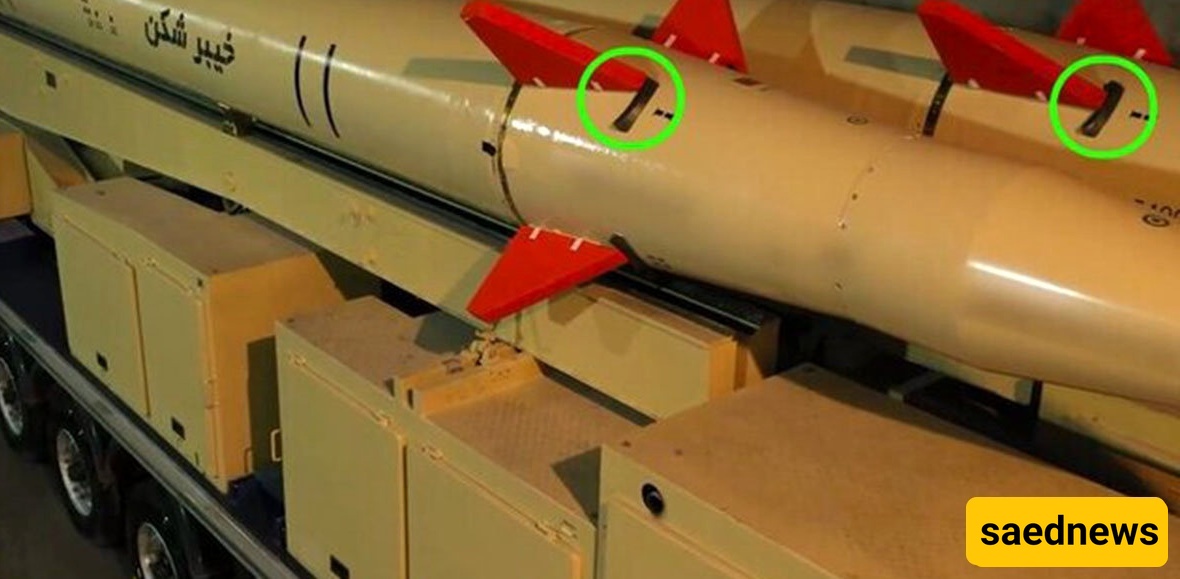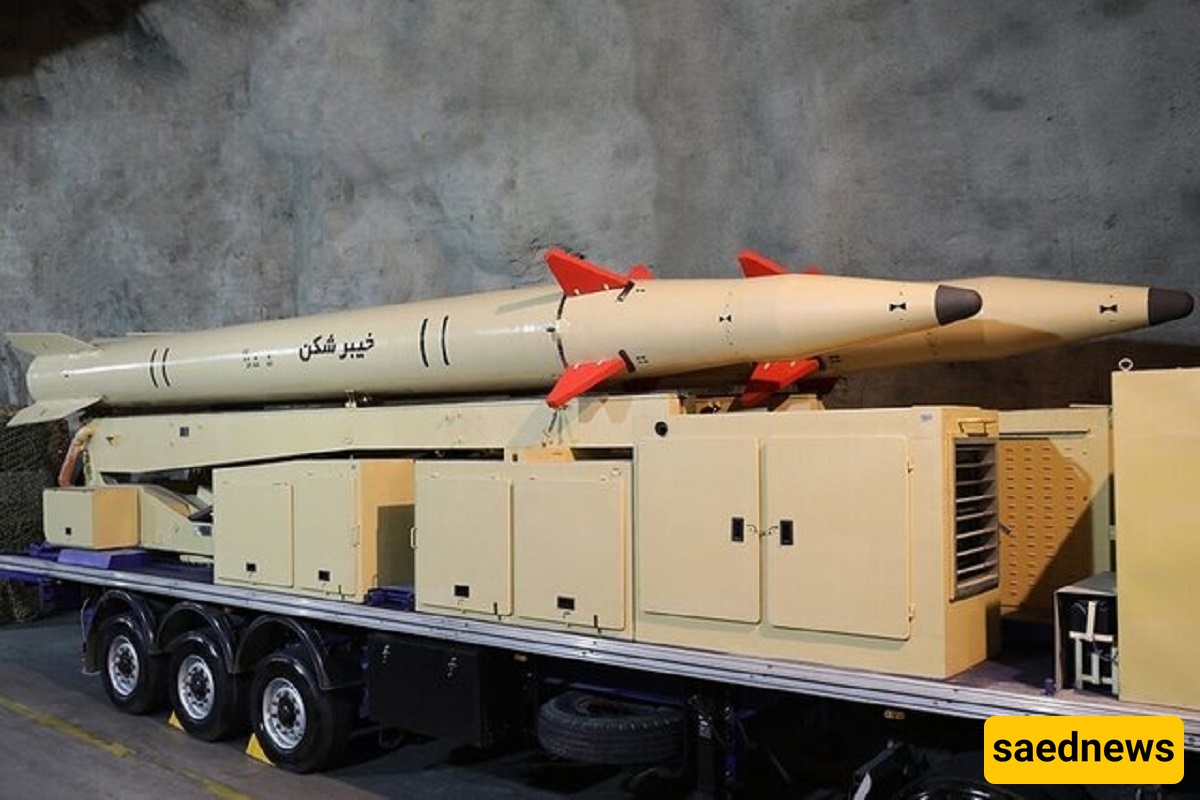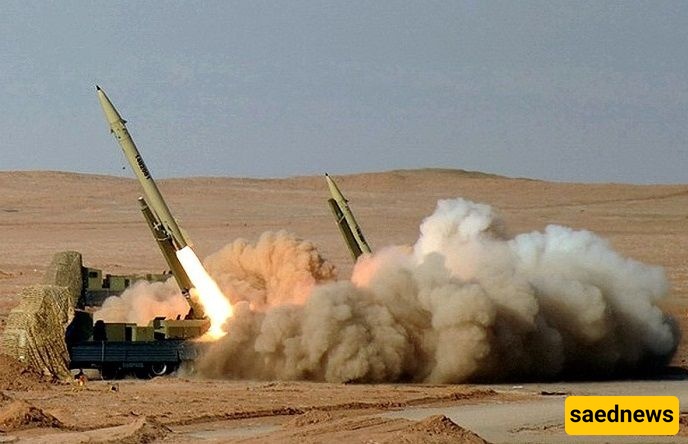SAEDNEWS: Iran’s Kheibar Shekan missile reaches speeds over Mach 5 and features advanced maneuverable reentry fins to evade missile defenses like Iron Dome. About 11 meters long with a tri-conic warhead, it can strike targets up to 1,450 km away, marking a significant leap in Tehran’s regional missile capabilities.

According to Saednews, The Kheibar Shekan missile—unveiled by Iran in early 2022—has captured significant attention due to its advanced design and reported use in recent waves of strikes against Israeli targets. This missile, whose name literally means “Kheibar Breaker,” refers to the historical Battle of Kheibar and symbolizes a potent weapon designed to penetrate and defeat Israeli defenses.

Analysis of released images reveals the Kheibar Shekan's remarkable acceleration immediately after launch, reaching speeds of Mach four to five before exiting Earth’s atmosphere. This intense acceleration minimises gravitational drag and extends the missile’s range to an estimated 1,450 kilometres, placing the entirety of Israel within striking distance.
One of the missile’s defining features is its relatively large, movable fins attached to its warhead. These fins grant the warhead exceptional manoeuvrability during its atmospheric reentry phase, enabling sharp and complex trajectory changes—sometimes exceeding 90 degrees—allowing it to evade sophisticated missile defense systems such as the U.S.-supplied Patriot batteries or Israel’s Iron Dome and David’s Sling.
These fins, part of what are called manoeuvrable reentry vehicles (MaRV), operate during atmospheric reentry to guide the warhead dynamically. Though aerodynamic heating visibly causes the fins to glow and partially melt immediately after launch, this effect diminishes sharply once the missile executes evasive maneuvers, allowing it to strike targets with a terminal velocity of approximately Mach 2 to 3. Crucially, the warhead’s maneuverability helps it bypass missile defense interceptors, increasing the likelihood of a successful strike.

The Kheibar Shekan’s warhead adopts a tri-conic shape, a three-cone configuration that balances aerodynamic stability with manoeuvrability during high-G turns. While this design increases drag forces—which typically reduce speed—the Iranian engineers have prioritised manoeuvrability over drag reduction, recognising that agility is paramount for defeating enemy air defences.

Exact official specifications remain classified, but visual estimates put the missile’s length at roughly 10.5 meters and its diameter at 80 centimetres. According to the late Brigadier General Amir Ali Hajizadeh, commander of the Islamic Revolutionary Guard Corps (IRGC) Aerospace Force, the Kheibar Shekan weighs about one-third of comparable missiles, such as the Qadr S missile. This suggests a total launch weight of approximately 4.5 tonnes, including a 500-kilogram warhead—a highly efficient figure for a tactical ballistic missile with this range.
Iran’s ability to achieve this weight advantage is largely attributed to the use of composite materials in the missile’s body and engine components. This trend is evident in other IRGC missile programs, such as the Ra’ad-500 and the composite engines of the Zoheir, Salman, and Rafe’ missiles. Composite materials offer reduced weight without sacrificing structural integrity, thereby enhancing range and manoeuvrability.
Another tactical benefit of the Kheibar Shekan is its relatively compact size. Smaller missiles mean more can be stored in the limited space of underground missile bases. Moreover, the missile is mounted on a commercial 10-wheel chassis, providing mobility and camouflage advantages by blending into civilian vehicle traffic, complicating enemy targeting efforts.
Iran has also unveiled a dual-launcher capable of firing two Kheibar Shekan missiles in rapid succession. This capability—previously seen only with shorter-range solid-fuel ballistic missiles—marks a first for missiles with ranges exceeding 1,000 kilometres. Given the missile’s reach covers all of Israel, it has earned the nickname “Israel-Slayer.” Increasing the number of missiles ready for launch on mobile platforms raises the potential salvo size, a critical tactic for overwhelming missile defence systems.
Enhanced Warhead Explosives
Images and statements from the late IRGC Aerospace Force commander suggest the missile’s warhead contains highly powerful explosives that significantly exceed the destructive power of conventional TNT. While specifics are undisclosed, the missile’s name and design hint at the potential development of bunker-busting warheads, allowing it to target hardened underground facilities.

The Kheibar Shekan missile exemplifies Iran’s advancing missile technology, integrating high-speed reentry, advanced maneuverability, lightweight composite materials, and potent warheads. Its design addresses the challenges posed by modern missile defense systems and enhances Iran’s strategic deterrence posture. The missile’s nickname, “Israel-Slayer,” reflects its intended role in Iran’s asymmetric military doctrine, signaling a credible threat to Israeli security and reshaping the balance of power in the region.

